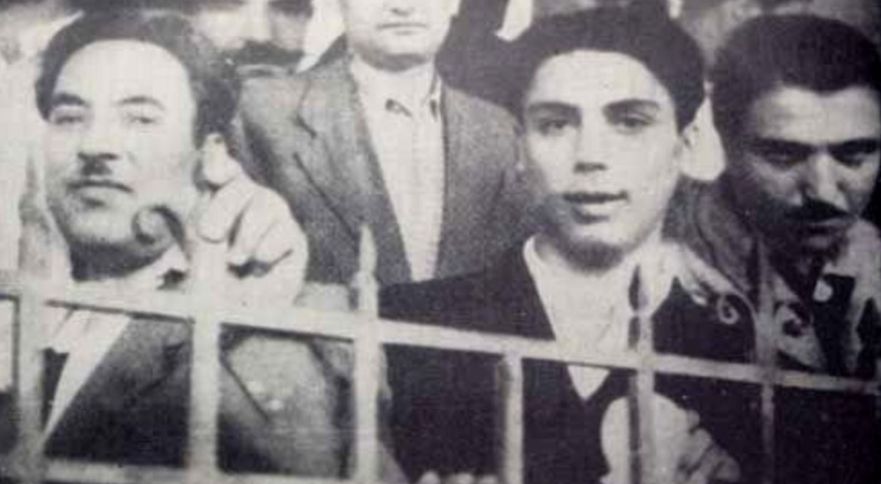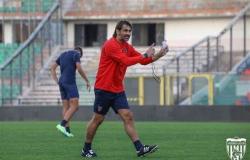Today is Liberation Day. From what? From fascism, a regime that marked Italians for 20 years. When the government is on the right, attention rises, as now between a censored Scurati and those who stammer about anti-fascism so as not to lose consensus.
Fascism is eternal and does not die in Milan with the entry of the partisans into the city. Umberto Eco codified it well in his short essay of the same name which marks as characteristics the absolute ethical state and some reference archetypes such as refusal of the critical spirit, conspiracy theories, contrast to pacifism, the frustration of the middle classes, the fear of diversity which often becomes racism and so on declining.
The April 25th is an Italian date but it is a north wind; the events of the South went differently and the history and geography of the Calabrian resistance deserves an investigation on the eve of the 80th anniversary of the founding date of the Republic and the Constitution.
April 25, 1945 is also the date of the ford in our area between the Pollino and the Strait. Democratic life was new. Antonio Guarasci, the first Christian Democrat president of our Region, a historian, mentions this in his study on the college of his native Rogliano, pointing out that in the municipalities (the first elections took place here in 1946) the first turning point took place on the capacity for autonomy and political choices and programs that see the Calabrians of the new era take their destinies into their own hands. It is a fact that I also find in a 1975 editorial by Piero Ardenti who as director of the “Newspaper of Calabria”in publishing unpublished works by the communist Fausto Gullo, also cited the role of the operational capabilities of local authorities as a new way of governing. It was a dark work that began before fascism, born from a political and civil work that had had “famous interpreters and obscure interpreters”.
In Calabria we have lost a historical reference. Our Calabrian collective April 25th arrives early, and not as a direct civil war but with struggles for land. Our farmers, led by the leaders of the anti-fascist parties, took to the field after 25 July 1943. To be more precise, as Augusto Placanica notes, in September 1943, the peasants of Casabona, a few days after the armistice, occupied the Sairtizzi and Acquadolce estates of the Berlingieri barons. The clash is in the large estate. Like a wildfire in 1943, farmers occupied the lands in Strongoli, Melissa, Cirò and soon in San Giovanni in Fiore in Sila. These are events that fall on the Badoglio government. Minister of Agriculture is the communist Fausto Gullo who issues the first decree which legitimizes, in consideration of the state of necessity, the occupations that have already taken place, granting assignments to farmers set up in cooperatives. More decrees will follow, expanding this movement for liberation from poverty and the state of need. It would become the very active Renaissance Movement until 1950 and which will be very visible with the events in Melissa with the police killing farmers of all political beliefs, including MSIs. The Calabrian democratic point opposed to fascism, I believe it is from that part of our history, therefore well before 25 April 1945.
In the twenty years of Mussolini who opposed Fascism in Calabria? As in the rest of Italy there was a large majority of supporters of the new fascist and monarchist social bloc. There was no shortage of diehard anti-fascists. Historical research helps us understand who they were. Those affected by confinement and judicial measures. Today, with great difficulty, we remember the famous ones: Pietro Mancini, Fausto Gullo, Bruno Misefari. Then there are the others, the anonymous, the unknown. A total of 417 were officially proclaimed enemies of the regime. According to archivists and historians, the numbers are in line with the rest of Italy and the judicial files testify that the opposition to fascism in Calabria was avant-garde but consistent and extensive. It wasn’t just communists and socialists, there were also republicans, liberals, anarchists, freemasons and even Pentecostals and Jehovah’s Witnesses. They are stories of humble people that we met by reading the ungrammatical letters of their women who in broken Italian asked for clemency from the Duce, from Donna Rachele, from the King. Poor people who became very poor without the man of the house, and who upon returning from confinement or prison were marginalized people to whom no one gave work. Girolamo Muratori, for example, a communist construction assistant from Cittanova was considered to have adverse feelings towards the regime. A photo of Giacomo Matteotti and some subversive writings were found in his house. Five years of confinement. He left his wife at home with 4 children, the eldest of whom was 13, and the family was hungry and cold. The decorator Giuseppe Musumeci of Santa Severina was arrested in 1936. He lived with his wife with whom he had three children. To survive, the lady went into service and her two little twins, just a few months old, were taken to maternity leave by the public force as in Chaplin’s film “The Kid”. Her mother went mad with grief and she ended up in a mental hospital. Poor Peppino Musumeci released from prison in 1944 “had not yet managed to track down his creatures”. This too was fascism. One ended up in confinement for having torn a photo of the Duce, someone was drunk for insulting him in the public street or because he was a tough Calabrian like the communist shoemaker from Marcellinara, Vincenzo Scozzafava, who already indicated as “dangerous to national order” went to the registry office to impose the name of Lenin on his newborn son. Advised to desist by the prudent employee of his country, comrade Scozzafava declared that he could not change his ideas and that Lenin Scozzafava should be called the newborn. He will end up in handcuffs and reported to the Special Tribunal.

There Calabriahowever, also had its early April 25th, guns in hand. On March 29, 1945, Pasquale Cavallaro, communist and Ndrangheta elementary school teacher (when our mafia was still popular self-defense), leads the uprising and as mayor proclaims the Red Republic of Caulonia. A priest was killed and many ended up under the lash of the rioters. Legend has it that Stalin said: “We need a Cavallaro in every district.” The PCI, however, was very cautious and forced Cavallaro to surrender. Over three hundred went to trial, almost all, except three, pardoned by the amnesty of Togliatti, keeper of the seals who, as a good statesman, pacified Italy during the civil war. In Caulonia this evening at the call of the Anpi, April 25th will be commemorated in the name of the Red Republic of Cavallaro, and the polemicist Ilario Ammedolia will return to ask for the homage of toponymy to that historical event that the other part of the country continues not to grant in the name of the murdered priest.
In Calabria there was also the birth of neo-fascism as early as November 1943. With the Allied liberation of our region, groups of young people planted bombs in carabinieri barracks and anti-fascist homes, and also carried out D’Annunzio-like acts by placing flowers on the graves of German soldiers. They will end up on trial. It’s the trial of the 88s. There are movie characters in the dock. The noblewoman, former lover of Michele Bianchi, the heretic Luigi Filosa expelled by the fascists during the regime because he was a friend of the progressives and who returns to the blacks at the moment of defeat, Orlando Mazzotta, future prince of the Cosenza Forum and who will be a high-ranking MSI. They will end up acquitted in Catanzaro on a thousand technicalities with the defendants singing “Giovinezza” in front of the magistrate. In the Court of Cassation they too will benefit from Togliatti’s amnesty like the rebels of Caulonia. The others, the people of the fascist consensus, had become anti-fascist in a few hours after July 25, 1943. It was Orlando Mazzotta himself who told me that that day in Cosenza, he saw Ciccio Leporace, a well-known anti-fascist from Cosenza, who had pinned the Pnf symbol to his elegant jacket and he, amazed, asked: «Oi Who knows?»and my uncle in return who knew how to be an irreverent humorist: «Hem everyone up on the hunt and I’ll measure them». A new Italy and a new Calabria began between invented anti-fascists and nostalgic fascists.
Happy April 25th everyone. Even to the fascists who, thanks to that date, can freely express their ideas.
Corriere della Calabria is also on Whatsapp. Enough click here to subscribe to the channel and always be updated








